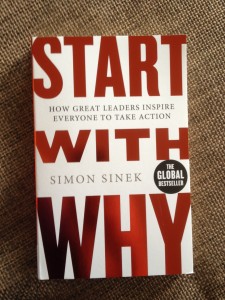Setting the Scene
During my Coach Education trip to The Greenhouse School, Temuco, Chile back in July 2014 I facilitated how you can use ‘Teaching Games for Understanding’ (‘TGfU’) and ‘Questioning’ to improve ‘Games Understanding’ in a large group of boys of 3rd and 4th Basico (U9s and U10s) with 4 other coaches, making sure everyone is active, engaged, and learning as much as possible.
The link to this ‘Coaching Journey’ on my website can be viewed here:-
http://nickhillcoaching.com/?page_id=888
4 “LARGE” pitches were created with the players divided into 4 “LARGE” groups, meaning there were 12 players in each group (48 players in total) split into a “LARGE” 6v6 game on the “LARGE” pitch. The middle section of the session saw the “LARGE” pitch split into 2 equal “small” pitches, with the players split into 2 sets of “small” 3v3 games on a “small” pitch. The last part saw the 2 “small” games join back together to create the “LARGE” 6v6 game in each area.
In between the playing ‘sets’ of the ‘Conditioned Games’, ‘Questioning’ opportunities were created by stopping the game and calling the players in to the coach. I facilitated the 1st one for each group…
The final key thing to highlight here at the beginning is that I had never coached these boys before this session…their 1st language is Spanish, with hardly any English…and my 1st language is English, with some basic Spanish…thus creating a very challenging coaching environment…
How do you engage all the players?:-
One of the key questions to always ask yourself as a coach is:-
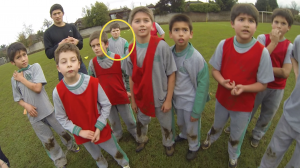
Through watching back the ‘Questioning’ videos of all 4 groups you can observe and notice many different things that occur during a ‘Questioning’ ‘set’ that you did not pick up upon in “real time”.
Questioning Sequence and Answers
By analysing the video clips of each group, I created 4 manuscripts to help with comparing the 4 different groups how the ‘Questioning’ sequence/process went, plus to help to identify any similarities and/or differences between the players’ responses to the questions that I posed to them.
1st Group
The video of the ‘Questioning’ sequence/process for the 1st group can be seen here:-
https://www.youtube.com/watch?v=KL7uKB-xM9g
The manuscript for the 1st group:-
|
Video Clip |
Time |
Comments |
|
1st Questioning 1st Group 101s 12 players 9/12 players engage in some form of communication |
3s |
“What is the aim of rugby…?”The players answer: Rugby(Thinking I have said “name”…?)10 out 12 players shout out answers once they fully understand the question1st response: “Pass the ball” |
|
25s |
In response to: “How do you score a try…?” Player physically imitates scoring a try with his hands. |
|
|
40s |
Player responds with: “Going forward”. |
|
|
69s |
“Do you run into a player…? Or between 2 players…?” |
|
|
73s |
Player responds with: “The side that is free” |
|
|
78s |
Player responds with: “The bigger space”. |
|
| 81s |
Repeat the question: “What is the aim of rugby…?” to check the players’ understanding and whether they have been listening & paying attention… |
2nd Group
The video of the ‘Questioning’ sequence/process for the 2nd group can be seen here:-
https://www.youtube.com/watch?v=lg807VQ-WH4
The manuscript for the 2nd group:-
|
Video Clip |
Time |
Comments |
|
1st Questioning 2nd Group 90s 12 players 6/12 players engage in some form of communication |
10s |
“What is the aim of rugby…?” Player response: “Try” |
|
30s |
“How do you score a try…?” Player response: “Passes”, “Going forward”, “On the Tryline”. |
|
|
55s |
“How do you get to the Tryline…?” Player response: “With 2 hands on the ball” Player response: “Running” Player demonstrates passing a ball |
|
|
68s |
“How do you run…?” Player response: “With the legs” |
|
|
76s |
“What do the legs do…? Slow or Fast…?” Player response: “Fast” “Why fast…?” |
3rd Group
The video of the ‘Questioning’ sequence/process for the 3rd group can be seen here:-
https://www.youtube.com/watch?v=T-u2TZBJc_A
The manuscript for the 3rd group:-
|
Video Clip |
Time |
Comments |
|
3rd Group 1st Questioning 104s 12 players 9/12 players engage in some form of communication |
12s |
“What is the aim of rugby…?” Passes…Try. |
|
18s |
“How do you score a try…?” Player physically imitates scoring a try… |
|
|
30s |
“How do you score a try…?” Several players responding with the answer…”passes”. |
|
|
40s |
“How do you go forward…? How do you run…?” Player responds with going through the players…and signals with his hand a weaving action. |
|
|
51s |
Non-verbal Player demonstrates side-stepping on the spot showing he understands what we are talking about. |
|
|
77s |
Aiming to involve all players in the Q&A: “How do you run in a rugby match…?” to the player standing at the back very quiet and not engaged. Providing 6s of thinking time…I then offer 2 choices: “Slow or Fast” Straight away the player responds with “Fast” “Why…?” He continues to think but struggles to come up with an answer and says “I do not know.” From the other players” “So you do not get tackled.” |
4th Group
The video of the ‘Questioning’ sequence/process for the 4th group can be seen here:-
https://www.youtube.com/watch?v=dEe7ddWze64
The manuscript for the 4th group:-
|
Video Clip |
Time |
Comments |
|
1st Questioning 4th Group 77s 12 players 9/12 players engage in some form of communication |
4s |
“What is the aim of rugby…?” Players responses: “Tackle, Scrum, Go forward, Play rugby, Play more…” Player response: “Try” Player demonstrates the motion of scoring a try with his hands. |
|
35s |
“Where do you score a try…?” Player response: “The Tryline” |
|
|
40s |
“How do you score a try…?” Player response: “Passes” Player response: “Run forwards towards the Tryline” |
|
|
57s |
“How do you run…? Player response: “2 hands on the ball” Non-verbal player responds with sprinting on the spot. |
|
|
65s |
“Do you run fast or slow…?” Players response: “Fast” “Why fast…?” Player response: “So you do not get tackled” |
Results
|
Group |
Time |
Players Engaged |
|
1 |
101s |
9/12 |
|
2 |
90s |
6/12 |
|
3 |
104s |
9/12 |
|
4 |
77s |
9/12 |
|
Total |
372s |
33/48 |
Observations
One of the key findings is that the more you do the ‘Questioning’ sequence/process…the better you get at it…as you fine tune the process…and learn from the different experiences.
This can be seen in the points below:-
- How I integrated more basic Spanish into my ‘Questioning’ after each group…helping the players to understand my questions better…thus improving the questions I asked…which in turn improved the flow of the ‘Questioning’…resulting in a better understanding and answers from the players…;
- How I tried to engage more players within a group after each group, not just taking answers from one particular player…;
- How I recognised players better that were stood at the back not being involved and thus tried to engage them in later groups…;
- How the amount of time used for each ‘set’ became more efficient to get to the similar end point.
Other points to note:-
- How you phrase/What you say in a question is key for the players in front of you to understand what you are asking… (e.g. Compare the number of responses and the different types of responses at the beginning of the 1st Group’s ‘Questioning’ between the English question and the Spanish translated question);
- A couple of times I gave the answer to the question…thus meaning I must not have phrased the question well enough because the players were not able to come up the answer I was looking for (e.g. 46s into the 1st Group’s ‘Questioning’ with “Tryline” and 65s into the 3rd Group’s ‘Questioning’ with “espacio = space”);
- At one point I had a certain point stuck in my head at the time that I wanted to get across to the players, but because of the line of questioning I used I was not able to extract the answer I was looking for (e.g. 65s into the 3rd Group’s ‘Questioning’);
- Compare how I went about the process of ‘Questioning’ for the same ‘Principle’…running into space…between the 1st Group’s ‘Questioning’ (48s to 80s) and the 3rd Group’s ‘Questioning’ (41s to 75s);
- Make sure you are able to listen to all the answers from the players…because if they all say answers at the same time you miss a good answer and the answer that you are looking for (e.g. Check out this part of the 1st Group’s ‘Questioning’ where I miss the player that says “espacio = space” right in front of me: https://www.youtube.com/watch?v=nJk7xKqsGfA);
- Try to avoid having players shouting out answers…having the rule if a player wants to give an answer then they should put their hand up. This also helps with the previous point.
Conclusions
- 33/48 players (69%) engaged in some form of verbal and non-verbal communication;
- An average of 93s was used for each ‘Questioning’ ‘set’;
- Each group understand what the aim of rugby is;
- Each group understand how to score a try;
- Each group understand what to do to score a try;
- 3 out of 4 groups understand why to run fast.
If it was Coach-centred direct instructions:-
- Would you see these same results…?
- Would you know that the players understood ‘How to Play?’…?
- Would you have a 69% engagement rate from players with verbal and non-verbal communication…?
- Would the player stood at the back be engaged in the process…?
Wider Observations
‘Questioning’ sequence/process:-
- What is the aim of the game…?
- How do you score tries…?
- How do you run…?
- Where should you run…?
- Should you run at a defender…? Why not…?
- Should you run slow or fast…? Why…?
Questions that I would have added looking back at the videos:-
- Why would you pass the ball to help score tries…?
- What else could you do to score tries…?
My questioning sequence/process philosophy starts with ‘WHY’…
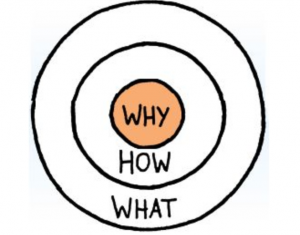
This is reinforced by Simon Sinek’s TED on ‘How great leaders inspire action’…based on his book ‘Start with WHY: How great leaders inspire everyone to take action’:-
http://www.ted.com/talks/simon_sinek_how_great_leaders_inspire_action?language=en
Observations during ‘Questioning’ ‘sets’:-
You will no doubt at some point in a ‘Questioning’ ‘set’ experience many different scenarios that your players will provide/show/offer you…
One of the key challenges as a coach is do you spot/notice them…? Once you have noticed an example…the next thing is to then weigh up whether or not it is something that you need to fix…something that you will need to address…or just ignore because it does not require any effort or energy from you as the coach to sort out…
Here are some player examples at opposite ends of the ‘Questioning’ continuum in the same moment…from fully engaged to completely disengaged…to help you spot/identify whether any of your players do similar things while you are trying to use the ‘Questioning’ approach with your players…This is because if you become self-aware of these subtleties you could improve your process of ‘Questioning’ and engage more players…more of the time…improving their knowledge and understanding…
The example below shows a player ‘playing up’ to the camera at the front of the group and a player at stood at the back engaged in something completely different which has nothing to do with the ‘Questioning’ sequence/process that is about to take place to help his understanding and/or reinforce his knowledge of the ‘How to Play…?’:-
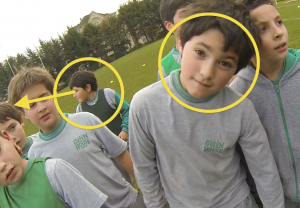
- Is the player at the front ‘playing up’ to the camera something significant…?
- Does it require your attention as the coach…?
- Will feeding that player’s attention seeking tendency going to help that player…?
- Is it going to help the group and the sequence/process of ‘Questioning’…?
- On the other hand should your attention be towards finding ways how you can engage the player stood at the back…? Who is more interested in watching another group doing what they are doing…
The example below shows an example of a player ‘playing up’ to the video camera right next to the coach and a player actively engaged in the ‘Questioning’ sequence/process:-
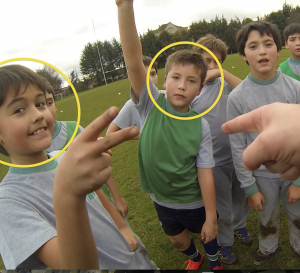
- Should your focus be on the player “messing around” and expending time and effort managing their low-level disruption…?
- Or should your attention be on the player with his hand up with an answer to the question that you have just asked to the group of players…?
- Which option would set the right tone for the ‘Questioning’ environment…?
- Which type of behaviour would you like to reinforce…?
The example below shows an example of a player actively engaged in the ‘Questioning’ sequence/process by raising his hand and another player still disengaged watching another group doing what they are doing on another area of the field:-
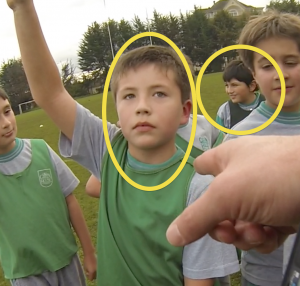
- While actively engaged with the player in the front with their hand up…what could you do as coach to actively engage and involve the player who is watching another group at the back…?
Some questions to consider when ‘Questioning’:
- Do you notice the player at the back in “real time”…?
- Do you always try and deal with the low-level disruptions from attention seeking players…?
- Who should you focus your attention on during a ‘Questioning’ sequence/process…?
- Are you thinking ahead to your next question(s) that could engage with the player to get him “back on track”…?
- Do you pre-plan the questions that you are going to ask…?
- Do you think about the pathways that each question could lead down…?
- Are you waiting for the answer(s) you have in your head as the coach…?
- Or are you listening to the player(s) response(s) that are from their world…their perspective…?
Tips:-
Naturally open up communication channels…
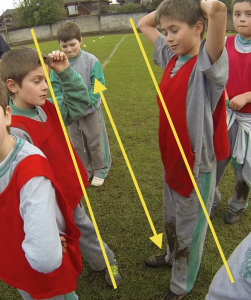
When trying to communicate with players…try to bring players on the “outside” into the group to engage them in the ‘Questioning’ sequence/process…encouraging them to have a go…to help build their confidence up…to help reinforce that they actually do know some of the answers…that it is ok to say short answers…as long as they are contributing and feel a part of the group…and improving their knowledge and understanding…
Engage players with demonstrations…
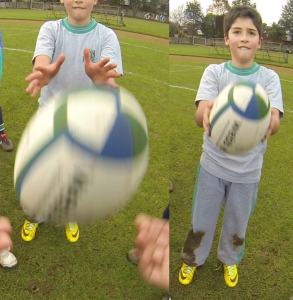
Allow “Thinking Time”…
See an example here: https://www.youtube.com/watch?v=PY53ArPkqXE
The key challenge during “Thinking Time” is trying to make sure the over-enthusiastic players, who know an answer, do not spoil it for the player with lower confidence…by shouting out their answers…as this may then prevent/stop the player “thinking”…thus shutting down this type of player in the ‘Questioning’ sequence/process…
Provide “50/50 options”…
See an example here: https://www.youtube.com/watch?v=PY53ArPkqXE
If a player is struggling to say an answer…provide a “50/50 option” to try to get the ball rolling…to encourage the player to offer an answer…and more than likely they will do so…
See an example here: https://www.youtube.com/watch?v=PnLw1NgXEDA
To help a group grow their understanding…provide a “50/50 option” to continue the flow of the ‘Questioning’…then follow that answer up with a higher-order question of ‘Why’, “How’, etc….to encourage and challenge the players thinking…as the players will be able to come up with their answers…unlocking higher-level answers…
See an example here: https://www.youtube.com/watch?v=nJk7xKqsGfA
If a group is not coming up with the answer that you are looking for…provide a “50/50 option” to work round the “sticking point” of the players’ understanding…that helps the players to continue to think about the answer to the original question…challenging themselves to seek out other answers…culminating with a player saying the answer the coach is looking for…
Make sure you create an environment where everyone can listen to each other…
See an example here: https://www.youtube.com/watch?v=nJk7xKqsGfA
Otherwise you do not hear/miss a really good answer from one of the players…e.g. at 7s in the clip when the player is right in front of you…
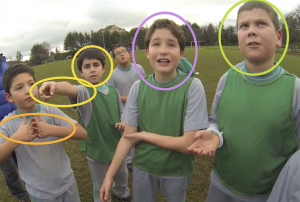
- The “orange” player is non-verbally communicating with an action…
- The “yellow” player is verbally and non-verbally communicating answers…
- The “purple” player is verbally communicating an answer…
- The “green” player is verbally communicating the “correct” answer…
- Which piece of communication do you see and/or do you hear in “real time” when everyone is all communicating at the same time…?
- Does a message get “lost in translation”…?
Situations to be aware of:-
Players offering non-verbal answers in their communication…
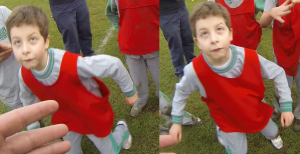
- How could you communication with this player to signal you have seen his good answer…?
- How do you acknowledge this player’s good answer…?
- How do you maintain the flow of the ‘Questioning’ sequence/process while players show non-verbal communication…?
- How else could you use this player’s non-verbal communication…?
Players completely disengaged…
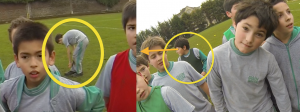
- What should we try to do as coaches to engage these types of players…?
- Who could you choose to answer the 1st question…?
- Where could you ask this type of player to stand in the group…?
- When could you have a chat with the player away from the session to try and learn and understand why he does not seem to be engaged in the ‘Questioning’…?
Players wandering around doing their own thing…
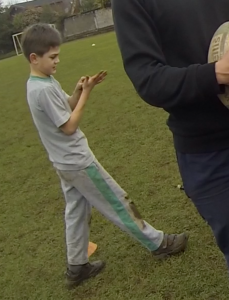
Watch the video again to see the journey this player goes on during the ‘Questioning’ ‘set’…and right at the end he was about to engage in an answer…
https://www.youtube.com/watch?v=T-u2TZBJc_A
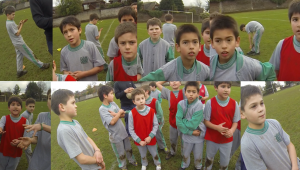
- What should we take away from an observation like this…?
- What can we learn from this…?
- Why does the player do this…?
- What is the player thinking during the ‘Questioning’ sequence/process…?
- Is the player listening to what the group is communicating…?
- How could you find out whether or not the player was paying attention to what the group were saying…?
- How could you check the player’s understanding…?
- Where else could you communicate with this player…?
- How else could you communicate with this player…?
- What could you do as coach to engage this type of player in ‘Questioning’ so that they feel part of the group…?
What does some of the evidence say about using ‘Questioning’:-
The following extracts are taken from ‘Athlete-centred Coaching: Developing inspired and inspiring people’ by Lynn Kidman (2005):-
Chapter 1: ‘Being Athlete-centred: the Empowering Coach’
“…questioning is the best approach to develop thinking and decision making in athletes. The technique of questioning is one way of helping athletes learn to problem solve. Stimulating questions are an extremely powerful means of inspiring athletes and enhancing intrinsic motivation (Butler 1997; Kidman 2001). Questioning also engages athletes at a conscious level, enhancing their concentration and thus their intensity.” (p.19)
“Athletes will undertake problem solving with enjoyment and ever-increasing effort if given the opportunity. Generating their own solution empowers athletes and gives them more self-awareness; the subsequent enhancement of their performance is well documented (Metzler, 2000; Ravizza, 1998; Schempp, 1982). For example, athletes who take ownership of the content of their learning will remember, understand and apply it more effectively than those who are told what to do, when to do it and how to do it. By enabling athletes to problem solve, a coach enhances their long-term learning (Thorpe, 1990).” (p.20)
Chapter 12: ‘Asking Meaningful Questions’
“When the coach asks questions, athletes must find answers, which in turn increases their knowledge and understanding of the purpose of particular skill performance and tactical plays in the context of competition.” (p. 245)
“It is known that athletes learn well and have higher retention rates if they are given the opportunity to work out for themselves what to do and how to do it.” (p.245)
“To create situations where athletes learn best, by listening to their responses, then redirecting, prompting or probing for better or more complex answers, coaches must have an in-depth understanding of the material they are asking about and the context in which it will be applied.” (p.245)
Questions to Promote Low-order and High-order Thinking
“Why? and how? questions enhance athletes’ ability to make decisions. It is important for coaches to allow athletes to think about questions and help and encourage them to answer. If the athletes are having difficulty with the answer, a coach can redirect or rephrase a high-order question so they can think carefully about what has been asked for, However, the coach should never give the answer itself, as it takes ownership of the problem-solving process away from the athletes.” (p.247)
“With high-order questions, there are no ‘wrong’ answers as the athletes generally interpret the questions at their own level of understanding. Coaches need to listen closely to the answers, interpret the significance and respond accordingly. Often athletes come up with the answers that coaches may find useful to elaborate and apply within their game plan. By listening, in other words, coaches can learn much from their athletes.” (p.247)
Techniques for Effective Questioning
“Formulating meaningful questions is a key element in establishing a great questioning environment. Planning the questions for the training session ahead is the most important step, especially if questioning is a very new part of the coaching repertoire.” (p.249)
“In planning questions, it is also important to be flexible in both developing the questions and timing them…the real art of questioning is to read the athletes, look at what is happening and ask relevant questions when the athletes are ready or need to solve a problem.” (p.250)
“An important management strategy in questioning is to ensure that all athletes are quiet and listening to the questioning sequence. To this end, a coach may create rules to encourage attention. Useful examples of rules include ‘When one person is talking, everyone else listens’ or ‘Raise your hand and wait to be called on’. Once the coach has the attention of all athletes, everyone can hear the questions, while the coach can make appropriate eye contact and look for nonverbal signs of misunderstanding or excitement among athletes.” (p.251)
“Increasing wait time enables athletes to formulate better responses and encourages them to give longer answers because they have had the opportunity to think. When given this ‘thinking time’, athletes tend to volunteer more appropriate answers and are less likely to fail to respond. With longer wait time, athletes exhibit more confidence in their comments and those athletes whom coaches rate as relatively slow learners offer more questions and more responses.” (p.252)
“…an appropriate wait time in coaching is 3 to 5 seconds.” (p.252)
Equity of Directing and Distributing Questions
“Coaches will notice that some athletes can not wait to answer the questions while others prefer to remain anonymous in the background. The athletes who volunteer readily are probably the most confident in their skills and their cognitive abilities…A coach must make a conscious effort to include all members of the team or squad in problem solving. A coach should allow equal time for all athletes to contribute to the discussion.” (p.254)
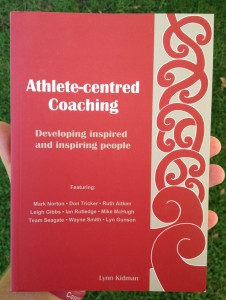
The POWER of using ‘Questioning’
- It actively engages the players who would otherwise be disengaged;
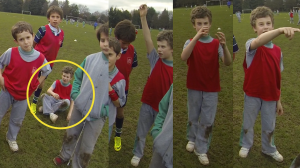
- It provides the opportunity for you as the coach to check/clarify/improve the players’ understanding;
- It provides an “active rest” period for players between playing games;
- It allows the players to take ownership of their learning;
- It both includes and involves the players in the ‘Coaching Process’;
- It provides the opportunity for the players to come up with the answers…;
- It provides the opportunity for the players to express themselves…;
- It provides the opportunity for the players to grow in confidence…;
- It provides the opportunity for the players to show the coach what they know and understand…;
- It utilises as much time as possible in the training/coaching/teaching session.
The CHALLENGE of using ‘Questioning’
- Trying to both include and involve ALL the players in a ‘Questioning’ ‘set’;
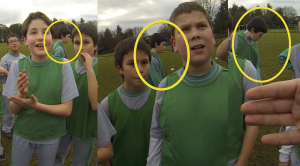
- Provide enough “Thinking Time” for ALL the players to come up with an answer;
- Trying to meet the needs of ALL players stood in front of you during ‘Questioning’;
- Avoid giving answers to the players…;
- Spending the right amount of time on a ‘Questioning’ ‘set’;
- Talking for the sake of talking…;
- Making sure the players are learning during the ‘Questioning’ sequence/process.


